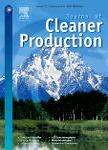版权所有:内蒙古大学图书馆 技术提供:维普资讯• 智图
内蒙古自治区呼和浩特市赛罕区大学西街235号 邮编: 010021

作者机构:Finnish Environm Inst SYKE Latokartanonkaari 11 FI-00790 Helsinki Finland Univ Helsinki Fac Biol & Environm Sci Viikinkaari 1POB 65 FI-00014 Helsinki Finland
出 版 物:《JOURNAL OF CLEANER PRODUCTION》 (清洁器生产杂志)
年 卷 期:2021年第289卷
页 面:125607-125607页
核心收录:
学科分类:0830[工学-环境科学与工程(可授工学、理学、农学学位)] 08[工学]
基 金:Strategic Research Council/Academy of Finland [303556, 327284] Ministry of Environment [KUHIMA project] Academy of Finland [Transition Pathways Towards Circular Economy (TRANSCIRC)] Kone Foundation Finnish Cultural Foundation Academy of Finland (AKA) [303556, 327284, 310405] Funding Source: Academy of Finland (AKA)
主 题:Household consumption Consumption expenditure Input-output analysis Carbon footprint Household budget survey Multivariate regression analysis
摘 要:Household consumption patterns contribute to climate change. Therefore, an understanding of the drivers of household consumption (food, housing, travel, services, and tangibles) and the related carbon footprint is crucial for policy design. This article studies household expenditure and carbon footprint in an affluent European country, Finland, using Household Budget Survey data from 2016 and an environmentally extended input-output model for Finland. The multivariate regression analysis includes demographic, socio-economic and spatial explanatory variables. Compared with previous literature in this field of research, the main contribution regarding variable selection is the inclusion of region and urban form interactions. The results show that the selection of spatial variables in the model affects the results and policy-relevant conclusions on the role of region, urban form, and their interactions as spatial drivers of expenditure and carbon footprints. Regarding the socio-economic characteristics, the study includes occupational status and shows that it has some effect on expenditure patterns even when the impact of education is controlled for. Another novelty of the article is to explore the decoupling of expenditure and carbon footprint from consumption-based perspective. Expenditure and carbon footprint are first analysed separately to address their drivers individually. Then, decoupling is examined by comparing the results of the drivers of expenditure and the carbon footprint. The analysis shows little evidence of the occurrence of absolute decoupling. The article discusses how analysis based on inputoutput data can show shifts in consumption patterns in terms of commodity groups but not on a product level. In all, the findings on the selection of spatial variables and decoupling, and related policy implications, contribute to the discussion on how to analyse household consumption and carbon footprints. (c) 2021 The Authors. Published by Elsevier Ltd. This i